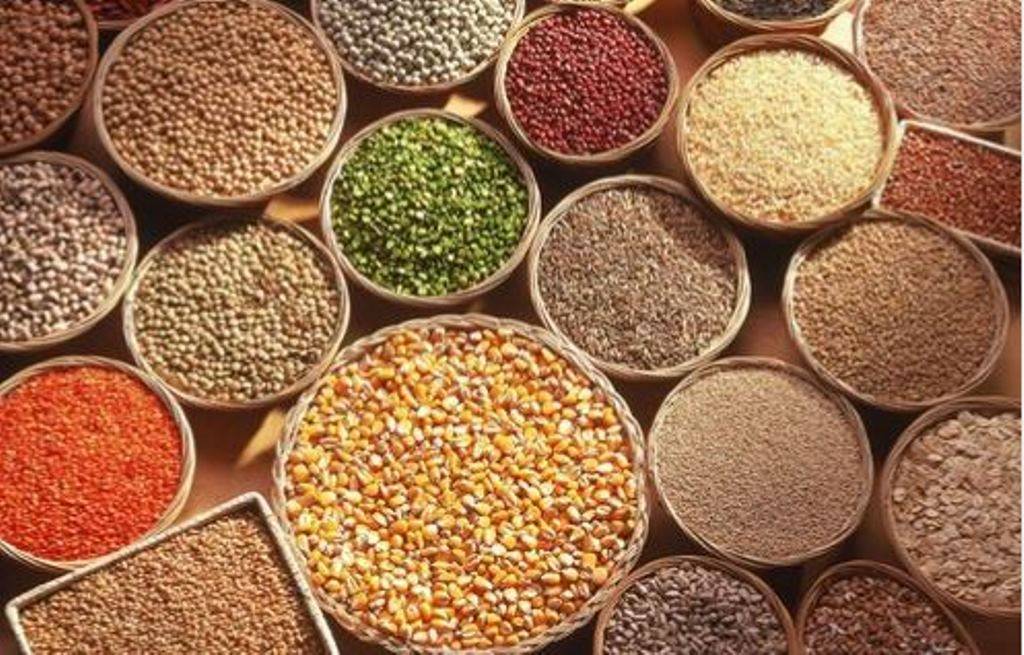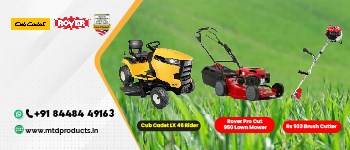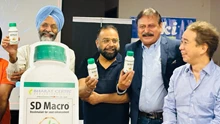
Millets are one of the oldest foods which are small-seeded hardy crops that can grow well in dry zones or rain-fed areas under marginal conditions of soil fertility and moisture. Millets are cultivated in low-fertile land, rain-fed and mountainous areas. They are often referred to as super-food and its production can be seen as an approach for sustainable and a healthy world.
Multidimensional benefits associated with millets can address the issues related to nutrition security, food security, and farmers’ welfare. Moreover, many unique features linked with millets make them resilient to India’s varied agro-climatic conditions. According to FAO in 2018, India is the leading producer in the world followed by Niger and China. In India, Rajasthan is leading among millet-producing states followed by Maharashtra and Gujarat (Adekunle et al., 2018). Citing these factors, the year 2018 has already been declared as the National Year of Millets and India has called for declaring 2023 as the “International Year of Millets”. However, in spite of acknowledging their significance as a super-food, the general perception is that the millets are increasingly seen as “poor person’s food”. Therefore, it is necessary to re-brand coarse cereals/millets as nutri-cereals and promote their production and consumption.
Millets Production in India:
The three major millet crops currently grown in India are jowar (sorghum), bajra (pearl millet) and ragi (finger millet). Along with that, India grows a rich array of bio-genetically diverse and indigenous varieties of “small millets” like kodo, kutki, chenna and sanwa.
Major producers include Rajasthan, Andhra Pradesh, Telangana, Karnataka, Tamil Nadu, Maharashtra, Gujarat and Haryana.
Importance of Millets:
According to the Ministry of Agriculture & Farmers Welfare, in 2016- 17, the area under the cultivation of millet declined with 60% less coverage area (14.72 million hectares) due to change in consumption pattern, conversion of irrigated area for wheat and rice cultivation, unavailability of millets, low yield, dietary habits, less demand. This resulted in fall in the level of nutrients like vitamin-A, protein, iron and iodine in women and children leading to malnutrition.
-
Millets are rich sources of minerals like calcium, iron, zinc, phosphorus, magnesium, and potassium. It also contains appreciable amounts of dietary fibre and vitamins such as folic acid, vitamin B6, β- Carotene, and niacin. The availability of high amounts of lecithin is useful for strengthening the nervous system. Therefore, regular consumption of millets can help to overcome malnutrition.
-
Millets are rich in phytochemicals like tannins, phytosterols, polyphenols and antioxidants; they do contain some anti-nutritional factors which can be reduced by certain processing treatments.
-
Millets have a wide capacity for adaptation because they can grow from coastal regions of Andhra Pradesh to moderately high altitudes of North-eastern states and hilly regions of Uttarakhand. Millets can withstand variations in moisture, temperature and the type of soils ranging from heavy to sandy infertile lands.
Advantages of Millet Production:
Millets have often been called the coarse grains, however, because of their nutritional contributions they are now being referred to as ‘nutria-millets or nutria-cereals’. Advantages of production of millets in India are-
-
Millets are termed as the ‘miracle grains’ or ‘crops of the future’ as they can not only grow under harsh circumstances but are drought-resistant crops that require fewer external inputs.
-
Millets are dual-purpose crops and cultivated both as food & fodder, thus providing food/livelihood security to millions of households and contributing to remunerative farming.
-
Millets contribute to mitigating climate change as it helps reduce the atmospheric carbon dioxide pressure. On the contrary, wheat being a thermally sensitive crop and paddy, the major contributor to climate changes through methane emission.
-
Production of millets does not depend on the use of chemical fertilizers. The millet crops do not attract pests and are not affected by storage.
-
Millets are remarkable in their nutritive value be it vitamins, minerals, dietary fibre or other nutrients. It is nearly 3 to 5 times nutritionally superior to wheat and rice. Sorghum (Jowar) is an important source of polyphenols, antioxidants, and cholesterol-lowering waxes.
-
Millets help in curbing obesity lowers the risk of hypertension, cancers as well as helps in preventing constipation due to their high dietary fibre content coupled with low glycemic index.
Need for Promotion of Millets:
Climate Resilient Crop: As Millets are resistant to climatic stress, pests and diseases, this makes them a sustainable food source for combating hunger in changing world climate.
-
Further, millets are not water or input-intensive, making them a sustainable strategy for addressing climate change and building resilient agri-food systems.
Nutritional Security: Millets are high in dietary fibre; nutri-cereals are a powerhouse of nutrients including iron, folate, calcium, zinc, magnesium, phosphorus, copper, vitamins and antioxidants.
-
They are not only important for the healthy growth and development of children but have also been shown to reduce the risk of heart disease and diabetes in adults.
-
Millets, being gluten free and low glycemic index food are good for diabetic persons and can help to combat cardiovascular diseases and nutritional deficiency.
Economic Security: Millets can be grown on dry, low-fertile, mountainous, tribal and rain-fed areas.
-
Moreover, millets are good for the soil, have shorter cultivation cycles and require less cost-intensive cultivation.
-
Given these features, low investment will be needed for production of millets and thus can prove to be a sustainable income source for farmers.
Climatic requirements for millets:
Millets require warm temperatures for germination and development & are sensitive to frost. For these reasons, they are normally planted from mid-June to mid-July month. Optimum soil temperatures for seed germination are between 20°C and 30°C. Proso and foxtail millet are efficient users of water & grow well in areas of low moisture, partly because they are early and thereby avoid periods of drought. Millets are often grown as catch crops where other crops have failed due to unfavorable weather.
Soil requirements for millets:
Millets are produced well on well-drained loamy soils. They cannot withstand waterlogging or extreme
drought. Proso millet does not make good on coarse, sandy soils. A pH level of 5.6 or higher is recommended for millet.
Seed treatment:
Seed treatment with biopesticides (Trichoderma harzianum @ 4g kg-1) or thiram 75% dust @ 3 g kg-1 seed will help against soilborne diseases and 300-mesh sulfur powder @ 4 g kg-1 seeds controls the smut disease. For removing ergot affected seeds, they are soaked in 10% salt solution. Seed treatment with metalaxyl (Apron 35 SD) @ 6 g kg-1 seed controls downy mildew. A fungicide will give protection against head smut (Sphacelothaca destruens) and may increase seedling survival. Seeds are treated with Azospirillum (600g) and Phosphobacterium to enhance the availability of nitrogen and phosphorus.
Cultural practices:
Method of Sowing:
Seed broadcasting should be avoided. The seed should not be placed more than 2 – 3 cm depth. Millets compete poorly with weeds; therefore, high seeding rates are essential to establish a dense stand. Millets are generally seeded with a seed drill at a depth of one inch. Even though the seed is small, it can develop extreme elongation of the first internodes & even deeper unless a hard crust forms. Press wheels on the drill will increase seedbed firmness & aid in stand establishment.
Nutrient management:
Nitrogen is usually the most limiting nutrient in millet production. Rates of nitrogen must be based on yield goals & cropping history. Excess nitrogen, whether applied or residual, may affect lodging. Phosphorus & potassium should be applied as need based on soil recommendations. Fertilizer doses of different millets are given in Table-2. Drill row applications of fertilizer (except straight phosphorus fertilizers) may cause seedling injury & are not recommended.
Harvesting:
Millets are ready for harvest when seeds in the upper half of the panicle are mature. Seeds in the lower half of the panicle may still be in the dough stage but must have lost their green colour. At this point, the leaves & stems may still be green. Millet is generally harvested by swathing to allow drying of straw before combining. Swathing too early reduces yield, test weight & colour quality. Harvesting too late increases loss as a result of shattering & lodging. Rodents and birds can cause damage to proso-millet during ripening. Foxtail millet must be harvested for hay or silage from the late boot to the bloom stage. At this stage, hay quality is at its peak, and protein levels of 12 to 14% may be regular. As the plant matures, protein percentage reduces. Mature bristles from delayed harvest may cause lump jaw & sore eyes in cattle feeding on bunks. Harvesting of foxtail millet for seed production is done under completely ripened conditions.
Conclusion:
Millets can easily thrive in extreme conditions like drought, and some wild varieties can even prevail in flooded areas and swampy grounds. The use of millets in commercial/packaged food will encourage farmers to grow millets and will open new opportunities and revitalize the farmers. The inclusion of millet-based foods in international, national and state-level feeding programs will help to overcome the existing nutrient deficiencies of protein, calcium and iron in developing countries.
Table 1 Diseases/Pest and their control
|
Millets |
Major disease/ pest |
Management |
|
|
Sorghum |
Pest |
Sorghum Shootfly
|
· Use of a higher seed rate of 12 kg ha-1instead of normal rate of 10 kg ha-1 · Timely sowing of kharif sorghum before July 15th · Application of carbofuran 3 G granules @ 2 g m-1 |
|
Disease |
Sorghum Stem Borer
|
· Uprooting and burning affected stubbles · Placement of carbofuran 3 G granules @ 4 kg ac-1 at 35-40 DAS in leaf whorls |
|
|
Pearl Millet |
Pest |
Anthracnose or Red Leaf Spot |
· Spray the crop with Mancozeb @0.25% or carbendazim@0.1% |
|
Disease |
Rust
|
· Spray the crop with Mancozeb @0.25% · Dusting of sulphur@25 kg ha-1 |
|
|
Barnyard Millet |
Pest |
White grub
|
· Mixing of Carbofuran 3G @ 12 Kg ha-1with Bajra seed and application |
|
Disease |
Shoot fly
|
· Dust the crop with 4 % cypermethrin or Fenvalerate dust @25 Kg ha-1 |
|
|
Finger Millet |
Pest |
Downy Mildew or Green Ear |
· Treat the seeds with Metalaxyl Captan @ 4g kg ha-1. |
|
Disease |
Rust
|
· Spray thrice at 15 days interval with Wettable Sulphur @ 0.3% |
|
|
Foxtail Millet |
Pest |
Stem Borer |
· Apply Phorate @15 kg ha-1 (10% granules) in the soil at the time of fieldpreparation. |
|
Disease |
Smut
|
· Soaking seeds in hot water at 55o C for 7-12 minutes. |
|
|
Proso Millet |
Pest |
Ragi Pink Borer
|
· Pull out and destroy by burning dead hearts and affected plant parts |
|
Disease |
Blast
|
· Spray of Iprobenphos (IBP) @ 0.1% or Edifenphos@0.1%, first spray immediately after symptom appearance |
|
Source: Chapke et al., 2018
Table 2: Fertilizer Doses, Seed Rate, Yield of Different Millets
|
Millets |
Regional name |
Scientific name |
Seed rate (kg ha-1) |
Fertilizer dose (kg ha-1) N:P2O5:K2O |
Grain yield (q ha-1) |
|
Sorghum |
Jowar |
Sorghum bicolor L. |
12-15 |
100-120:50:40 |
45-50 |
|
Pearl Millet |
Bajra |
Pennisetum typhoides |
4-5(Direct sowing) 1-2 (Transplanting) |
100:60:40 |
12-15 |
|
Barnyard Millet |
Sanwa |
Echinocloa frumentacea |
8-10 |
40:20:20 |
12-15 |
|
Finger Millet |
Mandua (Hindi) Ragi (Kannada) |
Elusine coracana |
8-10 |
40:20:20 |
20-25 |
|
Foxtail Millet |
Kangni |
Setaria italic L. |
8-10 |
40:20:20 |
15-18 |
|
Proso Millet |
Cheena |
Panicum miliaceum |
8-12 |
40:20:20 |
20-25 |
Source: Singh et al., 2016
References:
Adekunle, A., Lyew, D., Orsat, V. and Raghavan, V., 2018. Helping agribusinesses—Small millets value chain - to grow in India. Agriculture, 8(3):44-54.
Chapke, R. R., Shyamprasad, G., Das, I. K., & Tonapi, V. A., 2018. Improved millets production technologies and their impact, Pp:20-73.
Singh, C., Singh, P. and Singh, R., 2016. Modern techniques of raising field crops. Pp.112-187.
Authors
1Susmita Moi*, 2Bappa Mandal, 3Jhadi Rakesh, 4Debarati Seal, 5Manasi Patra and 6Bikas Chandra Patra
(1-5 Research Scholar and 6Professor)
Department of Agronomy, Bidhan Chandra Krishi Viswavidyalaya, Mohanpur, Nadia, West Bengal-741252
*Corresponding author’s email address: susmitamoi96@gmail.com











Share your comments